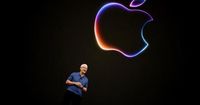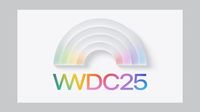On June 9, 2025, Apple Inc. kicked off its highly anticipated Worldwide Developers Conference (WWDC) with a keynote presentation that drew global attention from developers, consumers, and media alike. The event, held annually, serves as a platform for Apple to unveil its latest software innovations across its device ecosystem, including iPhone, iPad, Mac, Apple Watch, Apple TV, and visionOS. This year’s WWDC was particularly notable, not only for the breadth of software updates but also for the broader context of Apple’s current challenges in the tech industry.
Apple’s WWDC 2025 keynote began at 10 a.m. Pacific Time, with viewers tuning in from around the world—from Hawaii to New Zealand—to catch the first glimpse of the company’s upcoming operating systems. The event is traditionally a developer-focused conference, but its keynote presentation commands significant interest because it previews software updates that will roll out to the general public in the fall. This year, a major highlight was the unveiling of iOS 26, alongside updates to iPadOS 26, macOS 26 (codenamed macOS Tahoe), watchOS 26, tvOS 26, and visionOS 26.
One of the most striking announcements was a comprehensive visual redesign across all Apple operating systems, described as the most radical aesthetic overhaul in years. This refresh introduces a sleek, modern look inspired by the translucent, glass-like elements of visionOS, which Apple insiders have dubbed the "Liquid Glass" design. This new interface promises a more consistent and straightforward user experience, marking the biggest update to Apple’s software aesthetics since iOS 7 debuted in 2014.
The software rebranding also caught attention. Rather than following the expected sequential numbering (iOS 19), Apple has opted to align its software version numbers with the calendar year, hence iOS 26 for the upcoming iPhone operating system. This change extends across all its platforms, creating a more unified naming convention, albeit with some significant jumps in version numbers for platforms like visionOS, which moves from version 2 to 26.
Alongside the design changes, Apple revealed a suite of app upgrades. The Messages app, for instance, will gain automatic translation capabilities and support for polls, enhancing communication and interactivity. Apple Music users will enjoy animated album art displayed on the lock screen, while Notes will support exporting in markdown format, catering to users who prefer plain text with formatting. CarPlay is also set for an interface overhaul, aiming to improve the in-car user experience. Perhaps most intriguingly, Apple is preparing to launch a dedicated gaming app that will act as a central hub for games, chats, leaderboards, and seamless syncing across Apple devices, signaling a push to consolidate its gaming ecosystem.
Despite these exciting software developments, Apple’s efforts in artificial intelligence (AI) remain a point of concern. The company’s WWDC 2025 did not spotlight any major AI releases, a fact that has not gone unnoticed by industry observers. Apple has faced delays in rolling out its personalized Siri updates and broader Apple Intelligence initiatives. According to Bloomberg’s Mark Gurman, the event’s "most exciting part" was the iOS design overhaul, highlighting a lack of ambition in AI advancements. He likened Apple’s current position to "producing the best gas cars on the road" while competitors pivot aggressively toward electric vehicles—an analogy underscoring Apple’s lag in the AI race.
Further compounding Apple’s challenges, The Information reported that the company has been preoccupied with defending itself against antitrust lawsuits rather than diversifying away from its heavy reliance on the iPhone. This legal focus may be diverting resources from innovation in emerging technologies like AI and smart home integration.
Rumors preceding WWDC 2025 had hinted at possible hardware announcements, such as a new AirTag or the long-speculated smart home hub dubbed "homeOS." However, the keynote did not deliver on these expectations. Instead, Apple concentrated on software, with no new hardware unveiled. Nonetheless, software updates for Apple AirPods were teased, including features like camera control, enhanced gesture support, and a new microphone mode. The Apple Watch also received attention with new tracking features in watchOS and modest Apple Intelligence enhancements, though no new watch hardware was announced.
Another interesting development is the rumored enhancement of iPad functionality to resemble more of a Mac experience. Some iPad models running iPadOS 26 may display a macOS-like menu bar when connected to a Magic Keyboard, blurring the lines between Apple’s tablet and computer platforms and providing users with a more versatile and familiar interface.
Looking ahead, Apple plans to release beta versions of these new operating systems shortly after WWDC, with full public rollouts expected later in 2025. The iOS 26 update, in particular, is slated to coincide with the launch of the iPhone 17 in September, continuing Apple’s tradition of synchronizing major software releases with new hardware launches.
Apple’s WWDC 2025, while packed with significant software redesigns and new features, also served as a reminder of the company’s current crossroads. Its cautious approach to AI and absence of groundbreaking announcements in this field contrast sharply with the aggressive AI strategies of its rivals. As Apple continues to navigate legal battles and market pressures, the tech world watches closely to see whether it can reinvent itself beyond its traditional strongholds.
For now, the "Liquid Glass" design and the software ecosystem refresh offer a fresh visual and functional appeal to millions of Apple users worldwide. But the question remains: will Apple accelerate its AI ambitions soon, or will it continue to focus on refining its existing strengths while the tech landscape evolves rapidly around it?





